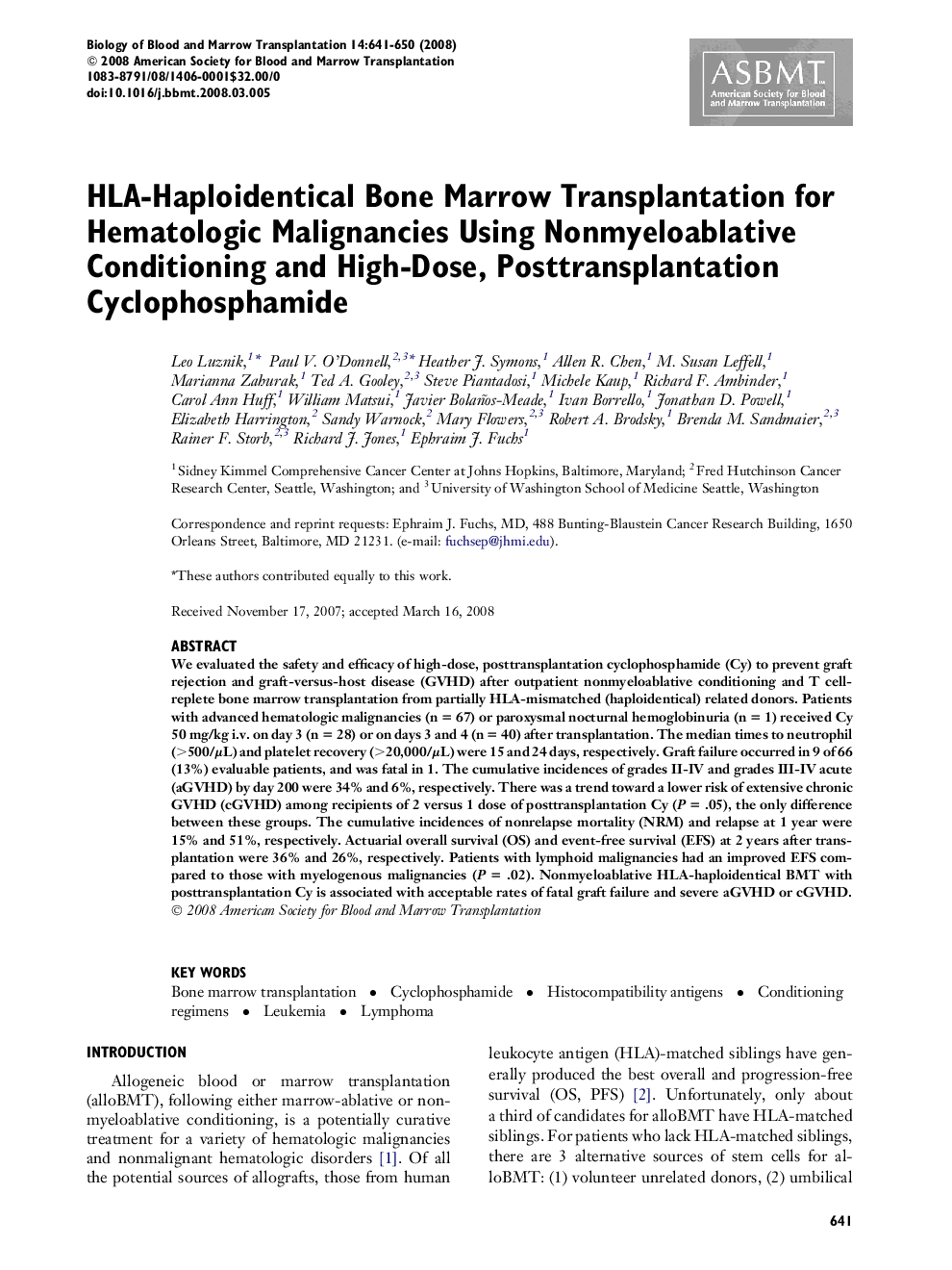| Article ID | Journal | Published Year | Pages | File Type |
|---|---|---|---|---|
| 2104092 | Biology of Blood and Marrow Transplantation | 2008 | 10 Pages |
We evaluated the safety and efficacy of high-dose, posttransplantation cyclophosphamide (Cy) to prevent graft rejection and graft-versus-host disease (GVHD) after outpatient nonmyeloablative conditioning and T cell-replete bone marrow transplantation from partially HLA-mismatched (haploidentical) related donors. Patients with advanced hematologic malignancies (n = 67) or paroxysmal nocturnal hemoglobinuria (n = 1) received Cy 50 mg/kg i.v. on day 3 (n = 28) or on days 3 and 4 (n = 40) after transplantation. The median times to neutrophil (>500/μL) and platelet recovery (>20,000/μL) were 15 and 24 days, respectively. Graft failure occurred in 9 of 66 (13%) evaluable patients, and was fatal in 1. The cumulative incidences of grades II-IV and grades III-IV acute (aGVHD) by day 200 were 34% and 6%, respectively. There was a trend toward a lower risk of extensive chronic GVHD (cGVHD) among recipients of 2 versus 1 dose of posttransplantation Cy (P = .05), the only difference between these groups. The cumulative incidences of nonrelapse mortality (NRM) and relapse at 1 year were 15% and 51%, respectively. Actuarial overall survival (OS) and event-free survival (EFS) at 2 years after transplantation were 36% and 26%, respectively. Patients with lymphoid malignancies had an improved EFS compared to those with myelogenous malignancies (P = .02). Nonmyeloablative HLA-haploidentical BMT with posttransplantation Cy is associated with acceptable rates of fatal graft failure and severe aGVHD or cGVHD.
